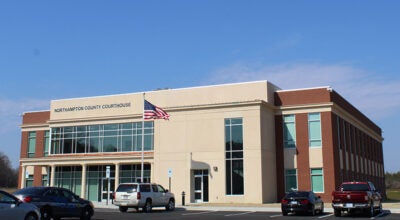Local post offices may be spared from closing
Published 8:49 am Thursday, May 17, 2012
Apparently, the United States Postal Service has changed its stance on shutting down small, less profitable, post offices that serve rural communities.
Postmaster General Patrick Donahoe said in published reports last week that his agency was backing off a plan to close up to 3,700 low-revenue post offices sometime after May 15.
Donahoe, citing strong opposition from those rural communities, said the agency was now studying plans on trimming full-time staff at those small facilities in an effort to maintain a part-time post office presence in rural areas, with access to retail lobbies and post office boxes.
In early August of last year, the Roanoke-Chowan News-Herald reported that USPS officials were considering closing smaller post offices, including three in the Roanoke-Chowan area – Roduco in Gates County and Pendleton and Severn in Northampton County.
All totaled, there were 20 post offices in North Carolina on the possible closure list.
U.S. Senator Kay R. Hagan (D-NC) applauded the new plan announced by USPS that would allow 234 rural post offices in North Carolina to remain open.
“This is great news for rural communities around our state,” Hagan said. “I’ve fought to keep rural post offices open because they provide crucial economic and social benefits to the community. I’m pleased that the voices of residents in these communities have been heard.”
Hagan wrote a letter to Donahue last summer urging him to delay closing post offices until North Carolina residents could voice their concerns. Last month, when the Senate passed the 21st Century Postal Service Act to put the USPS back on the road to financial stability, Hagan voted to extend the moratorium on rural post offices for one year. Just last week, Hagan joined a bipartisan group of Senators that wrote another letter to the Postmaster General asking him to extend the moratorium on post office closings until postal reform is signed into law.
A 2011 Commerce Department report shows that more than 30 percent of U.S. households did not have broadband Internet access at home. Additionally, more than 25 percent did not use the Internet. Postal mail remains the one universal service connecting North Carolinians to commerce, government, news and social and civic institutions.
In a statement made last year, Donahoe said, “Today, more than 35 percent of the Postal Service’s retail revenue comes from expanded access locations such as grocery stores, drug stores, office supply stores, retail chains, self-service kiosks, ATMs and usps.com, open 24/7. Our customer’s habits have made it clear that they no longer require a physical post office to conduct most of their postal business.”
On the other hand, Roduco Postmaster Betty Davis is a strong believer in hands-on customer service.
“A lot of people bring mail to the box because they feel safer dropping it in the box than having it in their mail box,” she said in an earlier interview. “Most of the people that come in aren’t regular customers, they are folks that just drop by.
“I provide a service and people seem to appreciate it,” she added. “I have time to help them and they tell me that’s important. It’s good to feel like people appreciate what I do.”
Under the new strategy introduced by Donahoe, no post office would be closed. However, more than 13,000 rural mail facilities could see reduced operations of between two and six hours.
To put that strategy in place, USPS said they intend to seek regulatory approval and get community input, a process that could take several months. The new strategy would then be implemented over two years and completed in September 2014, saving an estimated half billion dollars annually.
“We’ve listened to our customers in rural America and we’ve heard them loud and clear — they want to keep their post office open,” Donahoe said in a press statement. “We believe this will allow us to serve our customers’ needs and allow us to achieve real savings to help the Postal Service return to long-term financial stability.”
Under the new plan, communities would be given the option of keeping their area post offices open, but at reduced hours. Another option would be to close a postal office in one area while keeping a nearby one open full-time. Communities also could opt for alternatives including creating a Village Post Office, which would be operated by local businesses, such as pharmacies, grocery stores and other appropriate retailers, and would offer popular postal products and services such as stamps and flat-rate packaging.
“By working with third-party retailers, we’re creating easier, more convenient access to our products and services when and where our customers want them,” Donahoe said.
The latest move comes at a time when USPS is making a broad push for Congress to pass legislation this summer that would allow the agency to move forward on its multi-billion dollar cost-cutting plan, which include an end to Saturday mail delivery.
USPS has forecasted $14.1 billion in losses by the end of this year. Without taking any cost-saving measures, those losses could reach $21 billion by 2016.




